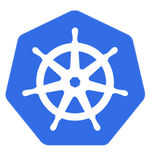The cloud migration process is a complex path that requires careful and detailed planning, which Quantyca defines and supports in the following phases:
Assessment
One of the critical aspects of the Cloud Journey is the assessment phase. In this first phase, a careful analysis and mapping of the as-is and evolution scenarios is carried out, defining requirements, needs and success metrics for the project.
This becomes crucial to ensure that the migration is aligned with business objectives and that results are measurable.
Requirements gathering must not only involve the IT sphere but also business users: by involving them from the initial stages, it is possible to gain their support by providing immediate feedback to their requests.
Quantyca developed a time-boxed assessment methodology to assess the current context (maturity and readiness) and construct a minimum viable strategy in a shared manner
Quantyca
Once the requirements underlying the migration process have been defined, a Foundation and a Landing Zone are set up in the cloud. The “Data Landing Zone” and “Platfom Landing Zone” are reference architectures that provide a solid foundation for the deployment of resources, while guaranteeing adequate governance and security management.
For further details please refer to Cloud Foundation.
Foundation
At this stage, certain organisational aspects also begin to be outlined.
A well-defined organisational structure facilitates the transition process and ensures effective management of the infrastructure.
Among the figures that make up the new organisation, we can find two relevant groups:
- Cloud Adoption: this group must include members with technical and business expertise to guide the decision-making process, evaluate cloud service options and define a detailed migration plan
- Cloud Centre of Excellence: The Cloud Centre of Excellence (CoE) is a team specialised in orchestrating best practices and guidelines related to cloud use, facilitating internal training and helping to ensure its effective and secure use.
Mobilization
The next step is the realisation of initial POCs aimed at clearing critical points and validating the blueprints developed and the migration plan.
The prioritisation of use cases to be migrated to the cloud must be based on objective criteria such as:
- Number of dependencies on other processes
- Business criticality
- Affected environment (Test, Development, Production, etc.)
It is therefore optimal to proceed by prioritising use cases with a reduced number of dependencies and limited complexity. This translates into developing familiarity with the cloud world, starting with simpler contexts and then increasing their complexity.
This prioritisation mode is also suggested by the main cloud providers.
Execution
Finally, through an incremental and value-driven approach, it is possible to expand the pool of applications affected by the migration, addressing increasingly complex use cases.





















